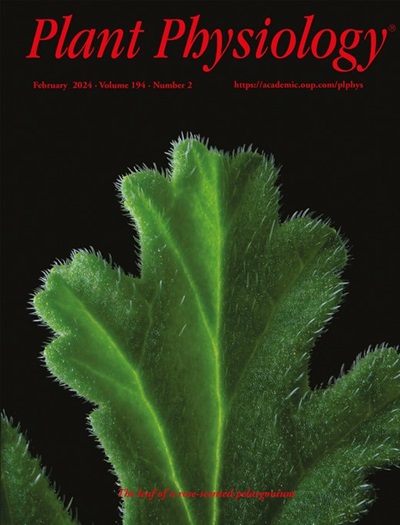Essential Yet Dispensable: The Role of CINNAMATE 4-HYDROXYLASE in Rice Cell Wall Lignification
IF 6.5
1区 生物学
Q1 PLANT SCIENCES
引用次数: 0
Abstract
A comprehensive understanding of the intricate lignin biosynthesis in grasses could contribute to enhancing our ability to utilize grass biomass. CINNAMATE 4-HYDROXYLASE (C4H), in conjunction with PHENYLALANINE AMMONIA-LYASE (PAL), initiates the entry of phenylalanine into the cinnamate/monolignol pathway, leading to the production of diverse phenylpropanoids, including lignin monomers. Despite extensive research on C4H in eudicots, genetic studies of C4H in grasses remain considerably limited. Notably, the role of C4H in the presence of PHENYLALANINE/TYROSINE AMMONIA-LYASE (PTAL), a grass-specific ammonia-lyase that can bypass the conserved PAL-C4H pathway by recruiting tyrosine into the cinnamate/monolignol pathway, remains unclear. To address this gap, a set of genome-edited rice (Oryza sativa) mutants harboring knockout mutations in rice C4H genes were generated and subjected to the analysis of growth phenotype and cell wall chemotype, alongside isotopic feeding and chemical inhibitor assays to test the contributions of the PAL-C4H and PTAL pathways. The phenotype and chemotype characterizations of C4H-knockout rice mutants demonstrated that class I (OsC4H1) and class II (OsC4H2a and OsC4H2b) C4Hs cooperatively contribute to lignin biosynthesis in rice. Nevertheless, the effects of C4H deficiency on plant development and lignin formation in rice appeared to be markedly less prominent compared to those reported in eudicots. The 13C-labeled phenylalanine and tyrosine feeding experiments demonstrated that even with the phenylalanine-derived PAL-C4H pathway completely blocked, C4H-knockout rice could still produce substantial levels of lignin and maintain sound cell walls by utilizing the tyrosine-derived PTAL pathway. Overall, this study demonstrates the essential but dispensable role of C4H in grass cell wall lignification.求助全文
约1分钟内获得全文
求助全文
来源期刊

Plant Physiology
生物-植物科学
CiteScore
12.20
自引率
5.40%
发文量
535
审稿时长
2.3 months
期刊介绍:
Plant Physiology® is a distinguished and highly respected journal with a rich history dating back to its establishment in 1926. It stands as a leading international publication in the field of plant biology, covering a comprehensive range of topics from the molecular and structural aspects of plant life to systems biology and ecophysiology. Recognized as the most highly cited journal in plant sciences, Plant Physiology® is a testament to its commitment to excellence and the dissemination of groundbreaking research.
As the official publication of the American Society of Plant Biologists, Plant Physiology® upholds rigorous peer-review standards, ensuring that the scientific community receives the highest quality research. The journal releases 12 issues annually, providing a steady stream of new findings and insights to its readership.
 求助内容:
求助内容: 应助结果提醒方式:
应助结果提醒方式:


